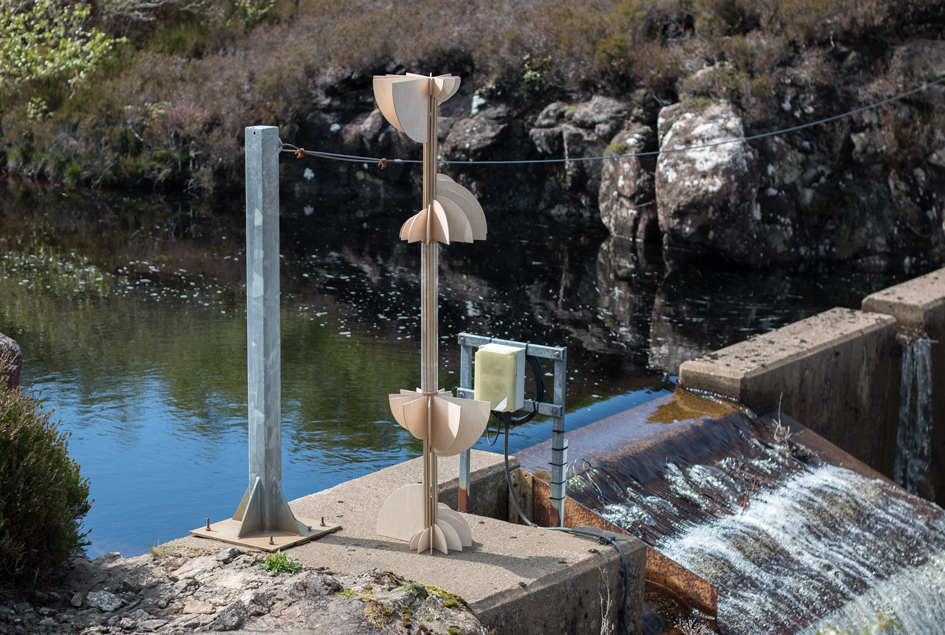HANNAH IMLACH: RSA Residencies for Scotland, 2016
Nautilus Turbine. My first visit to Eigg was not as an artist, but as a tourist. Like thousands every year, I came to explore the island, enjoy its scenery and go for long walks. However, the landscape was not the only thing to leave a lasting impression on me during that trip as I began to learn more about the island’s community-run renewable energy scheme. I went on to read Alastair McIntosh’s Soil and Soul, so was aware of the long and arduous process that led to Eigg’s community buy-out in 1997, and the autonomy this had brought the islanders. The more I learnt of the modest wind turbines and hydroelectric apparatus that inconspicuously sit in the landscape, the more I understood that the Isle of Eigg is a microcosm, representing many of the things that inspire and motivate my art practice.
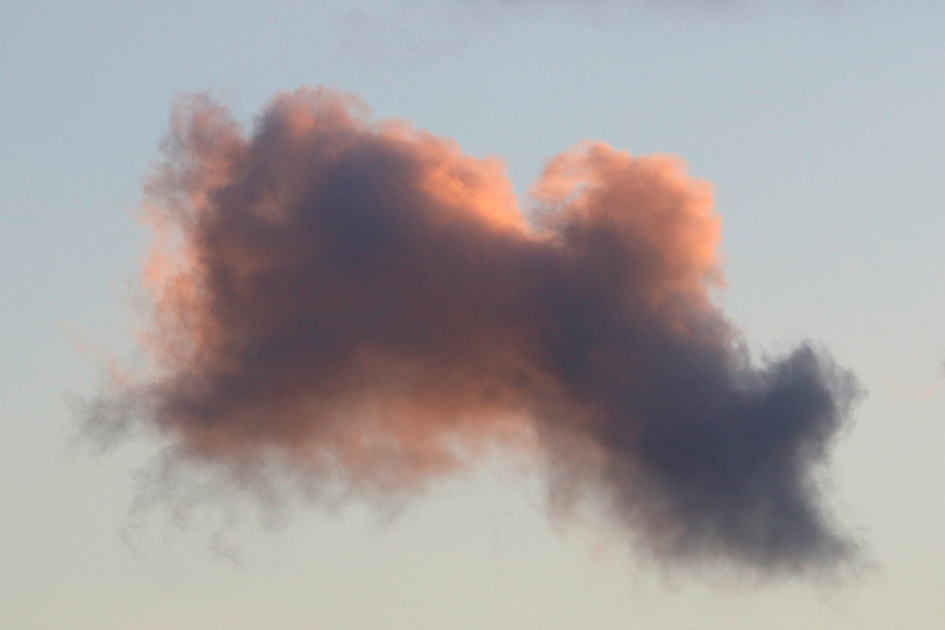
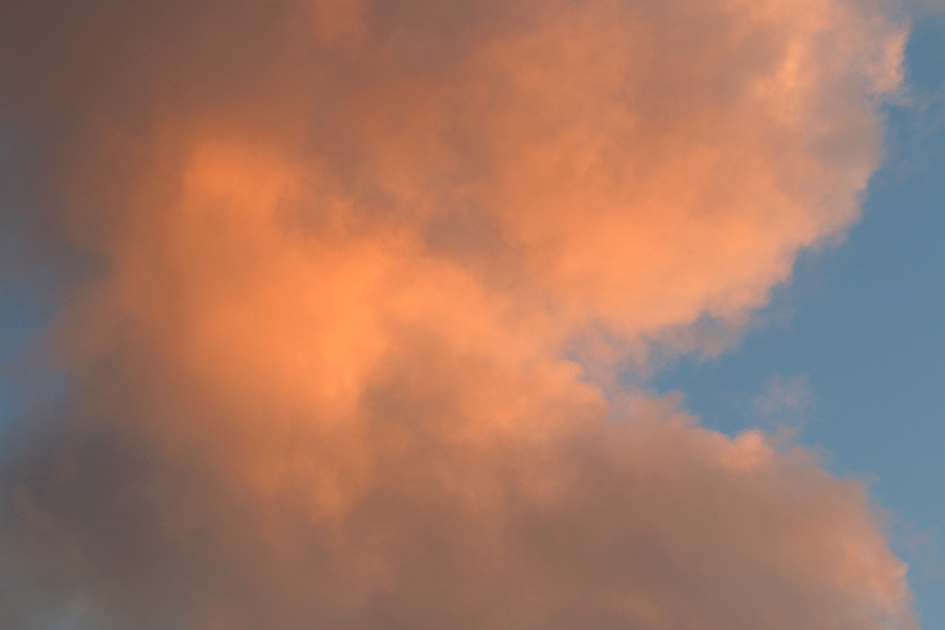
My artistic research is based on an ongoing investigation into environments and ecologies under threat, sensory experience of natural phenomenon and scenarios of future sustainability. The Isle of Eigg became increasingly relevant to me as a confluence of these ideas; the community peacefully coexist with areas of wilderness, small-scale renewable infrastructure provides power and the correlation between high winds, bright sunshine or heavy rainfall and increased energy supply is felt and understood.
My residencies at Sweeney’s Bothy on the Isle of Eigg took place during July 2015 and May 2016, part of a three-phase residency with The Bothy Project and Glasgow Sculpture Studios (GSS), funded through the Royal Scottish Academy’s Residencies for Scotland Award. My intention was to research the social and technical legacy of the island’s hydroelectric system and create a sculptural response, which could be brought back and documented on the island.
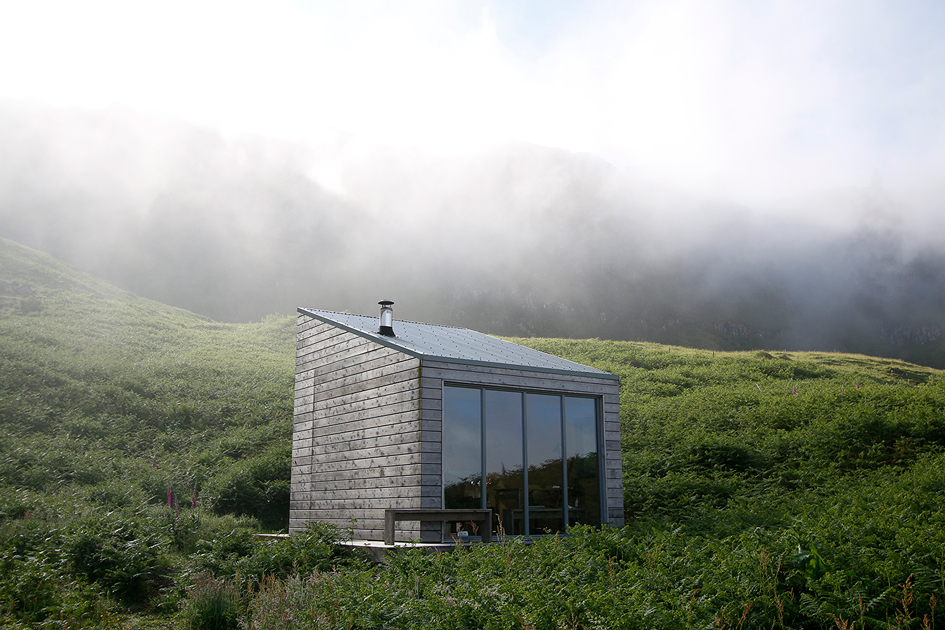
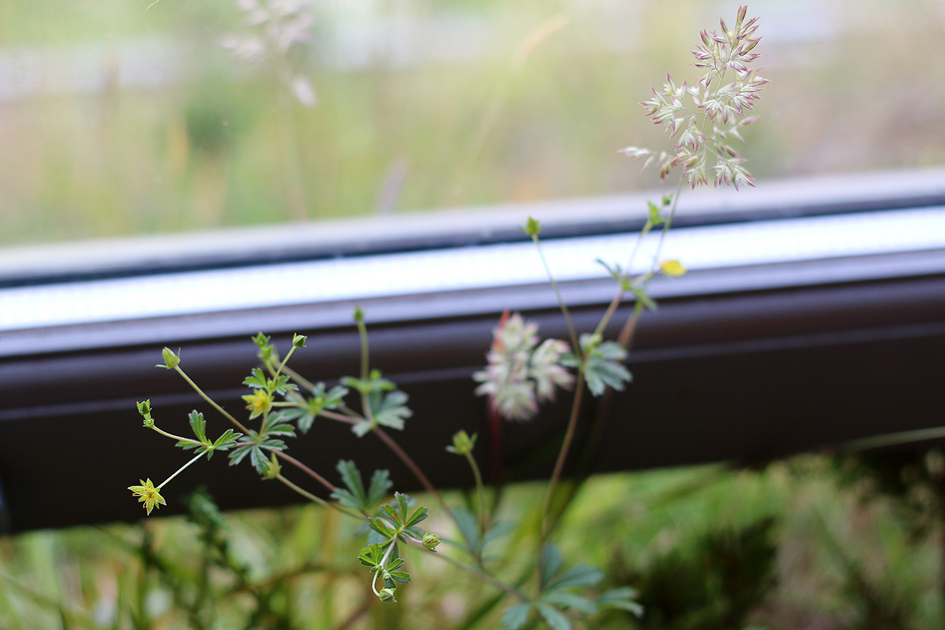
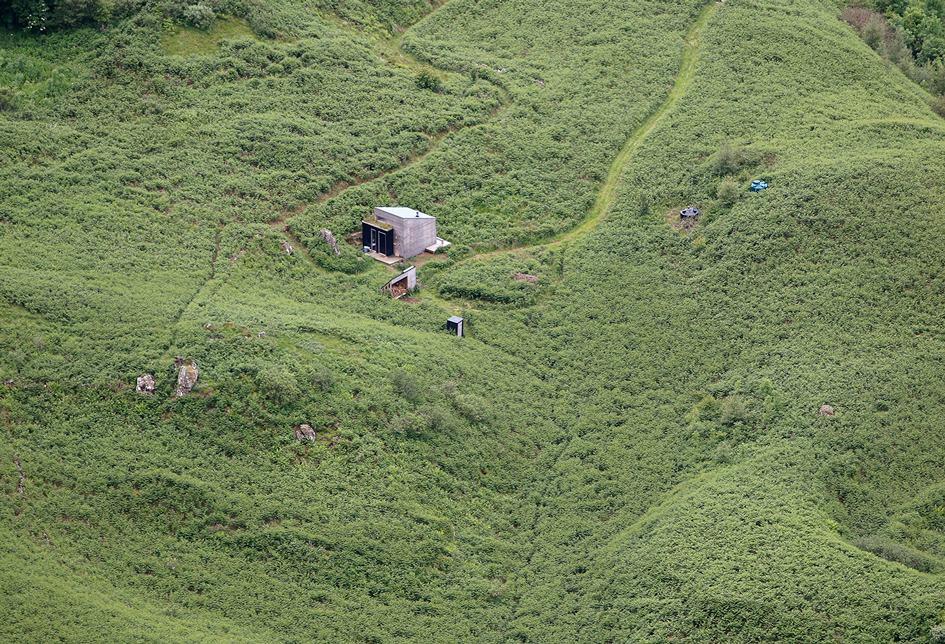
Arriving on Eigg in glorious sunshine in early July 2015, I spent a productive week based at the bothy. With host Eddie Scott, I spent a day touring the sites of renewable technology on the island – the wind turbines, photovoltaic panels, control room and battery shed. We drove along an overgrown forestry track to the largest hydroelectric dam on Eigg, which overlooks Cleadale and Laig Bay. From there I followed and pipe down the steep hillside to the turbine shed at Laig Farm to rejoin Eddie. Eddie (one of the small team of islanders trained to monitor and maintain the system) explained how the island’s formation and scale had created opportunities for innovative technology to be piloted, it was highly experimental at the time and not known if the combination of infrastructure would work. On successfully completing their grid the islanders were able to abandon the noisy and polluting generators previously used.
This balance of energy production and consumption is only feasible on Eigg because each islander is fully aware of their allotted energy allowance and monitors their usage. The awareness of the energy generating potential of their immediate environment and the power needed to support their lifestyles is very valuable, and an unfamiliar concept to many of us living with a seemingly abundant supply of energy available at a flick of a switch.
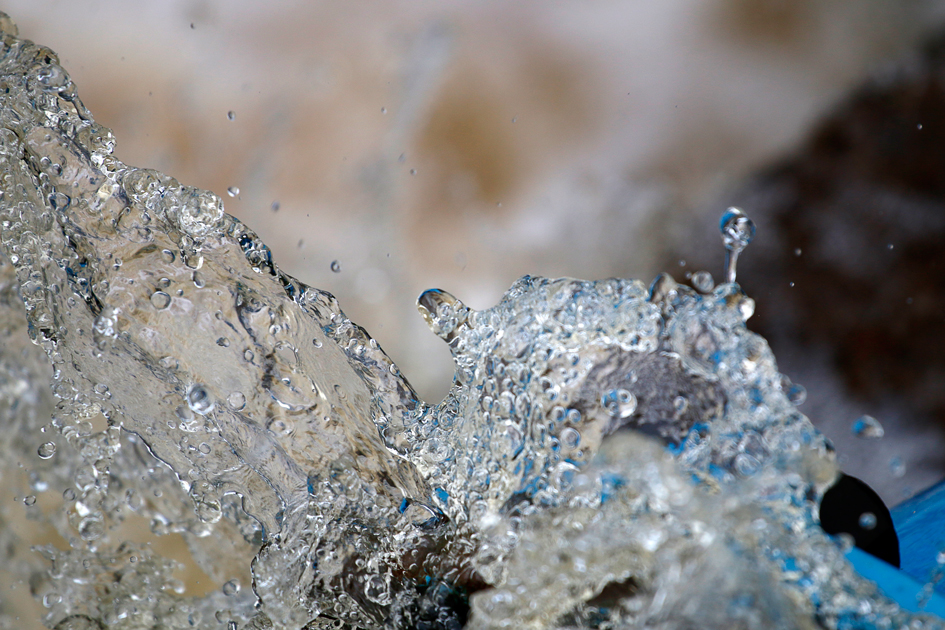
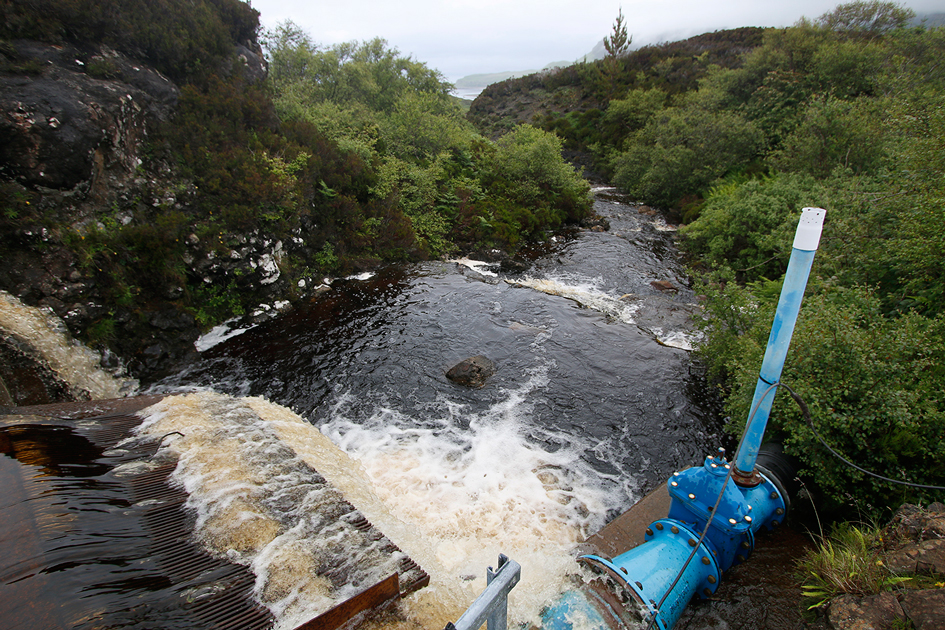
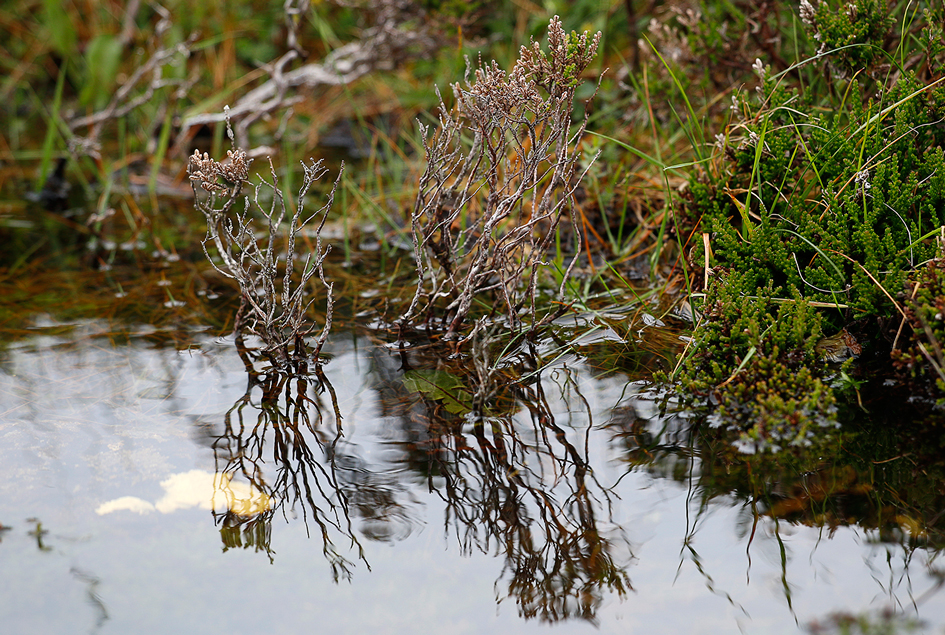
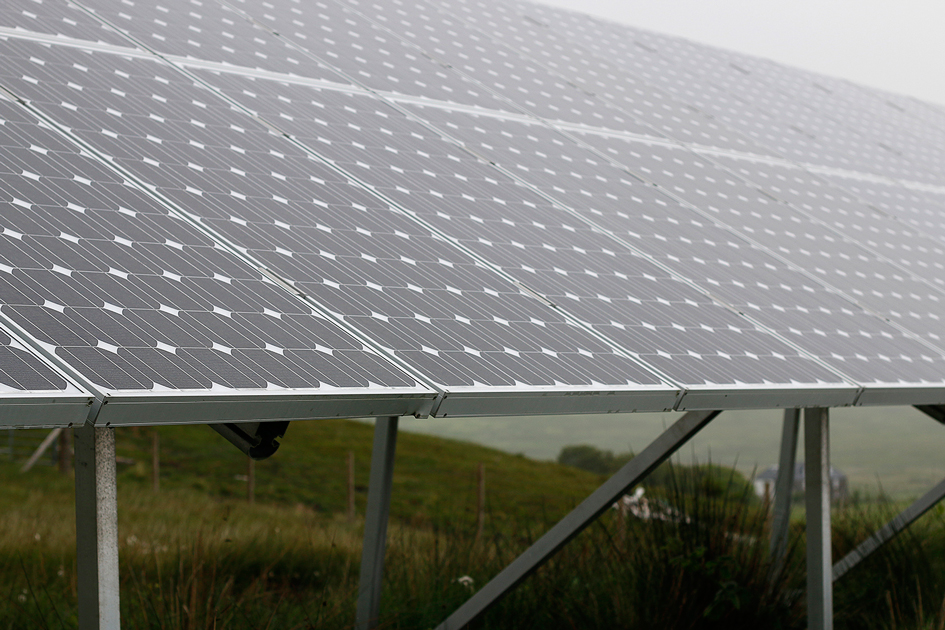
I left Eigg after a week of walking, writing, conversations and photography, thinking about the complex social, environmental and economic factors that make the islanders’ energy self-sufficiency possible. On one of my walks I had collected a handful of vibrant yellow periwinkle shells from Kildonan beach, so I also began to consider their spiralling shape, reminiscent of the volute casings of some industrial hydroelectric turbines.
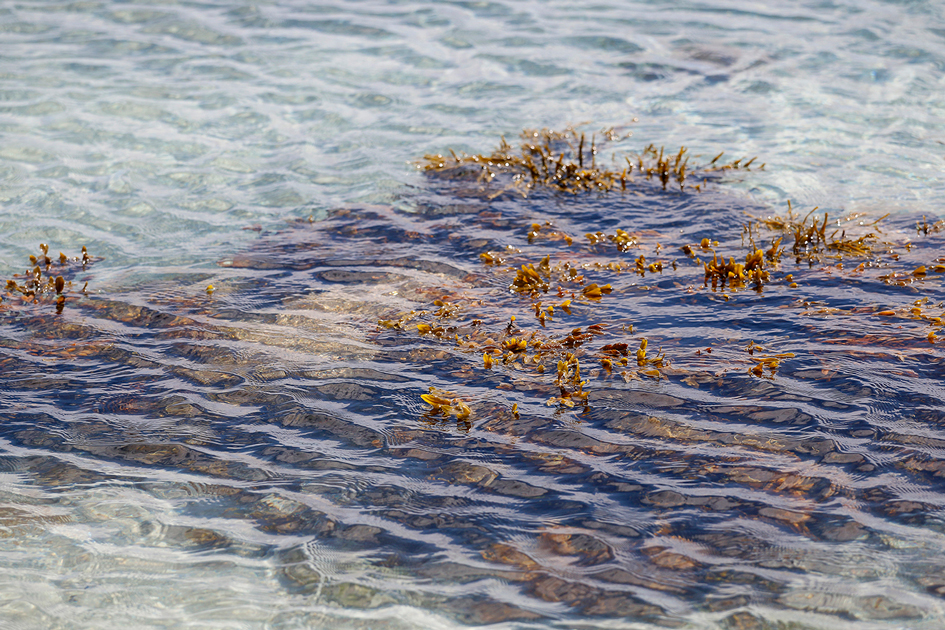
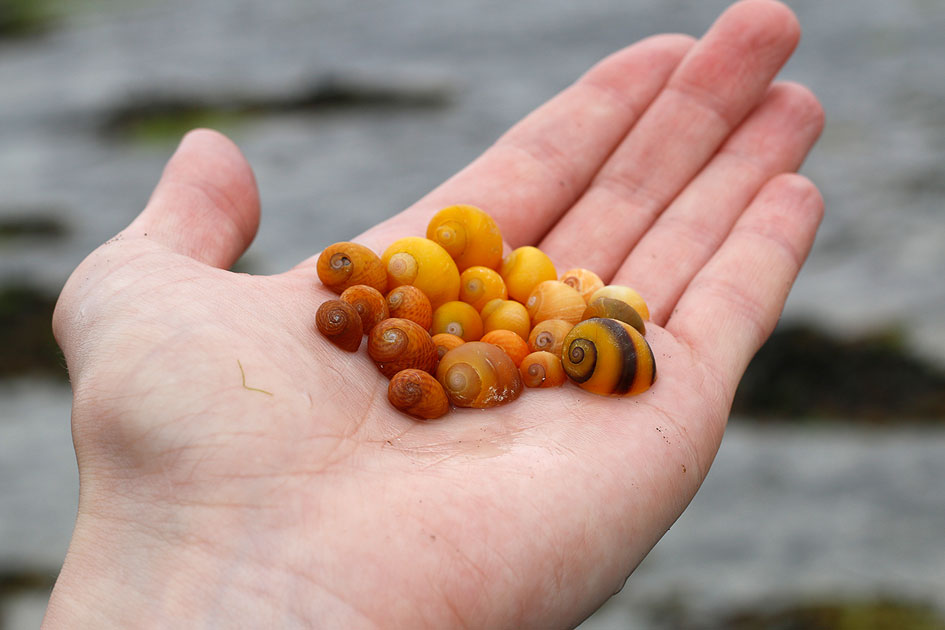
During the following months, including four weeks working at Glasgow Sculpture Studios, I continued to develop my work through research: I looked into the logarithmic patterns of shell spirals, the form of hydroelectric turbines and the patterns of water flowing through and around them. Transforming this material, I made drawings and maquettes, and experimented with different materials, testing one prototype at my local swimming pool in Glasgow.
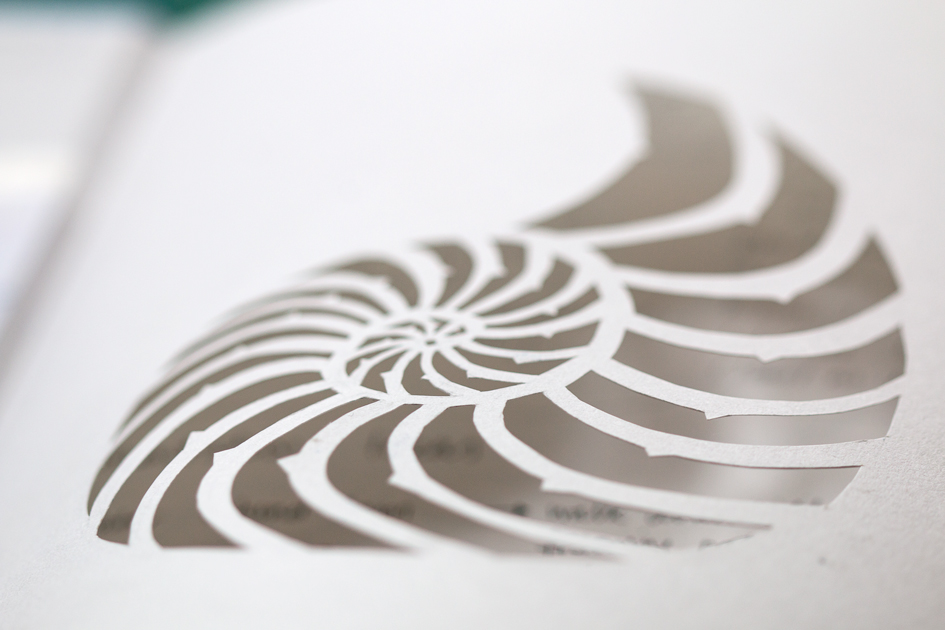
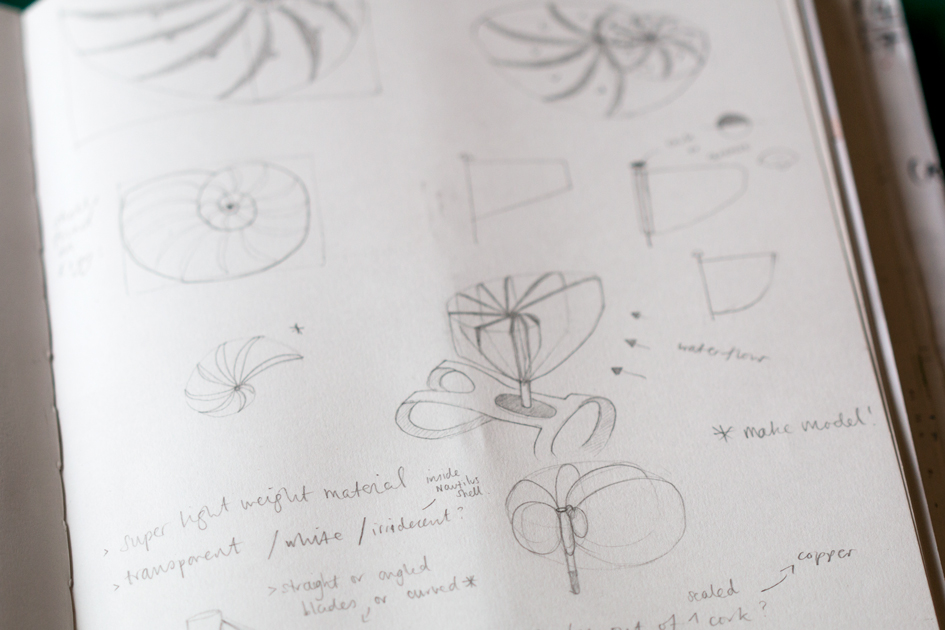
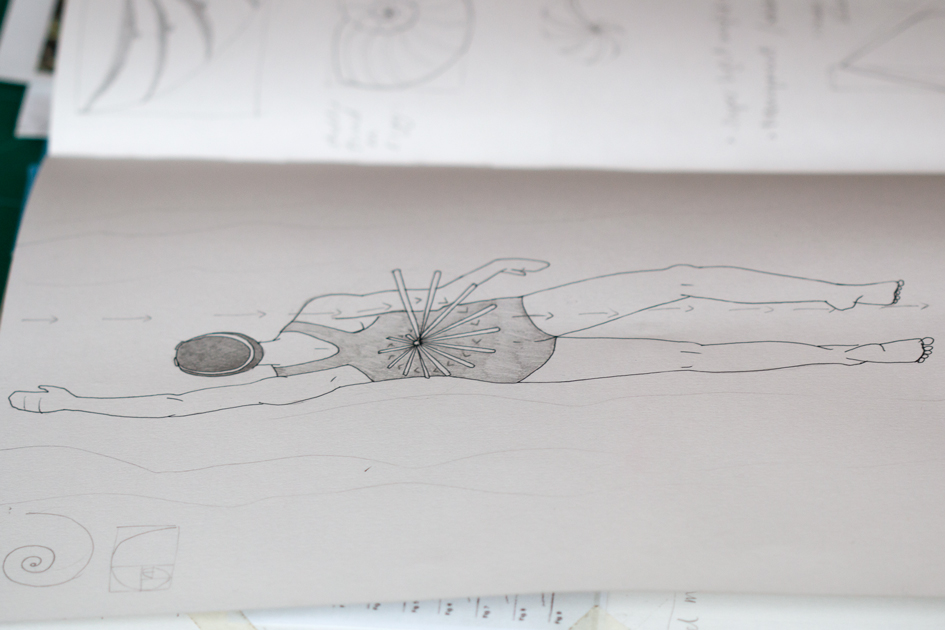
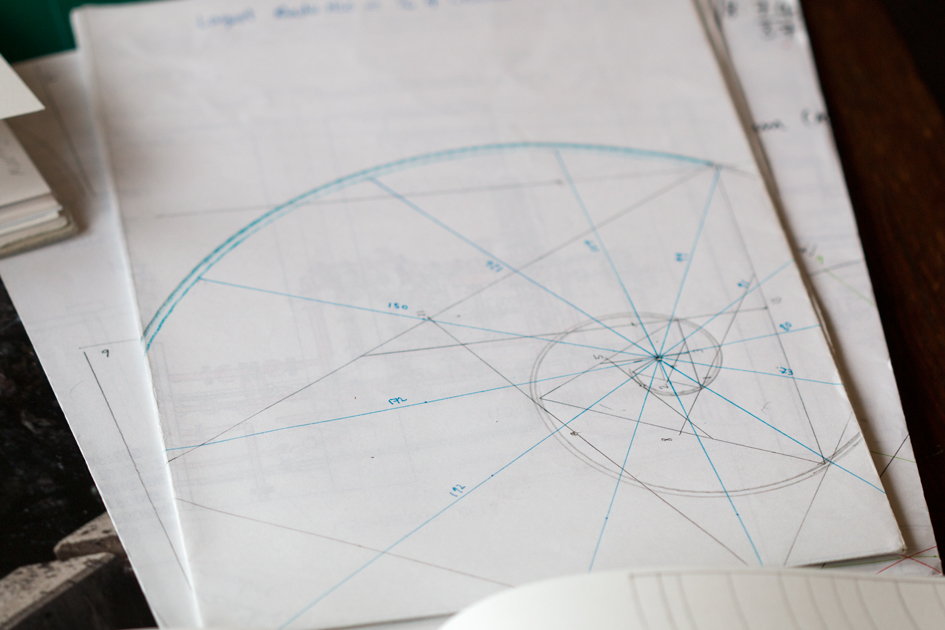
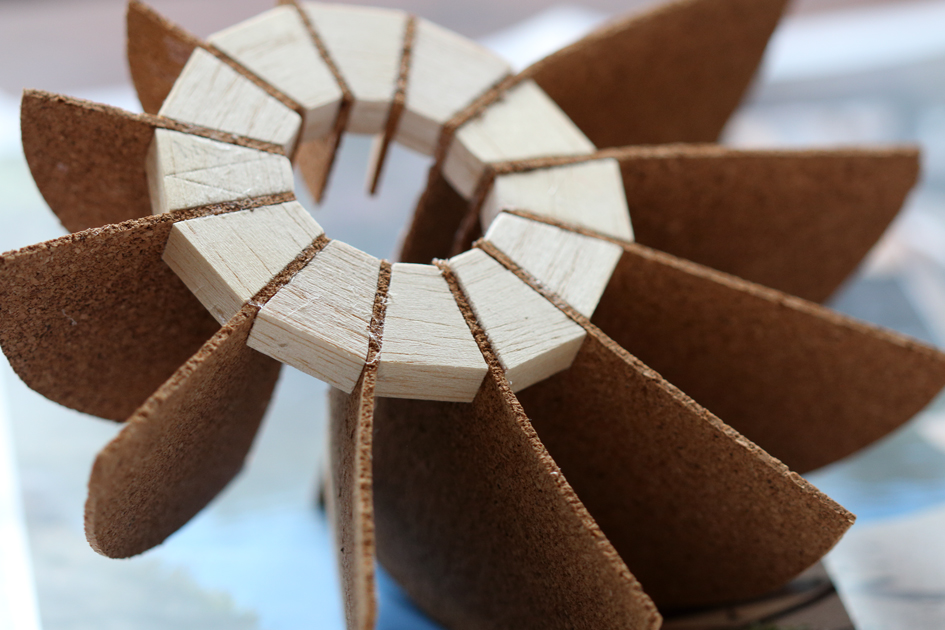
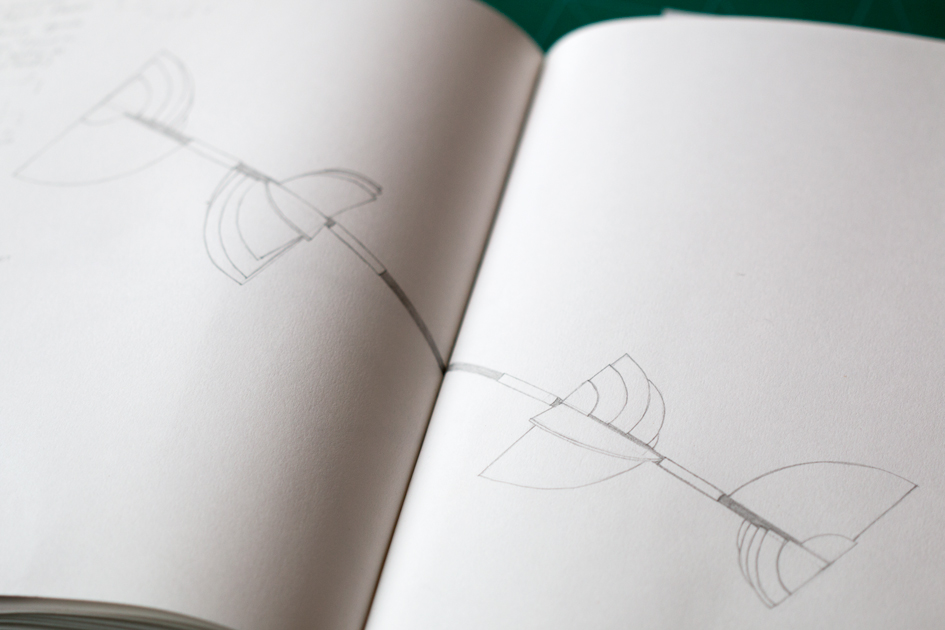
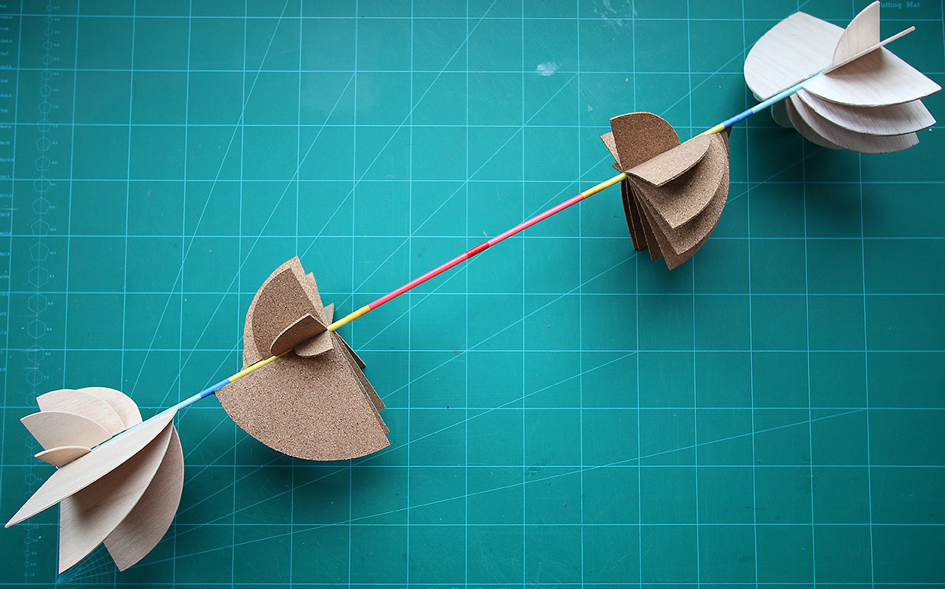
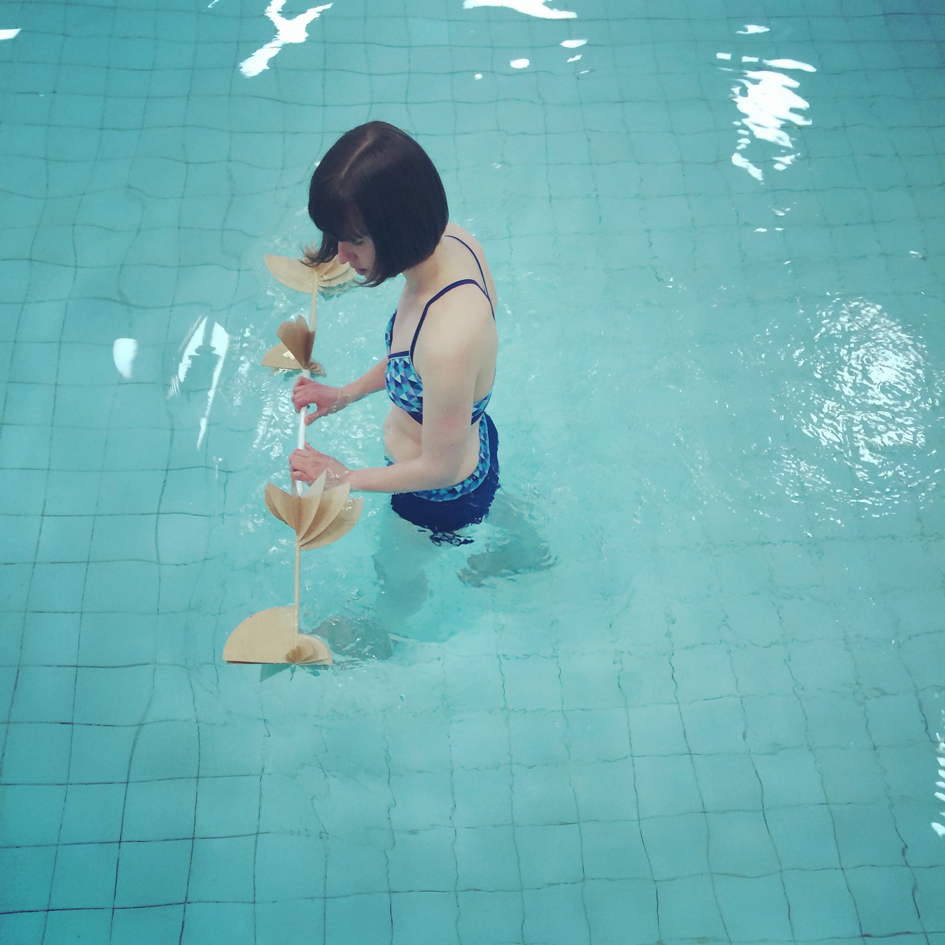
The piece I finally created takes the form of a personal turbine, activated by a swimmer. It has multiple kinetic components which are designed to rotate as the sculpture is pushed through water. The physical effort involved in activating the work references the responsibility and labour expended by the people of Eigg in generating their own energy.
I built the sculpture at GSS during April 2016 from tulip wood, birch plywood, Perspex and cork. I had agonised over the piece’s construction, balancing my aesthetic concerns with the demands made by the sculpture’s functionality. I eventually found a solution that would rotate freely and be strong enough to withstand the force of water pushing on each component.
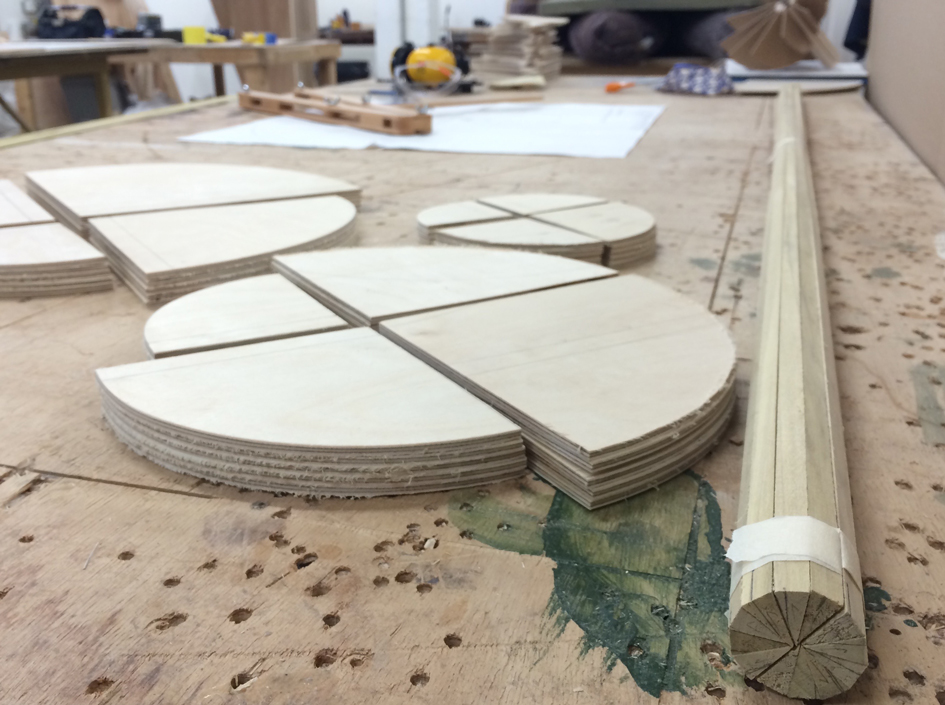
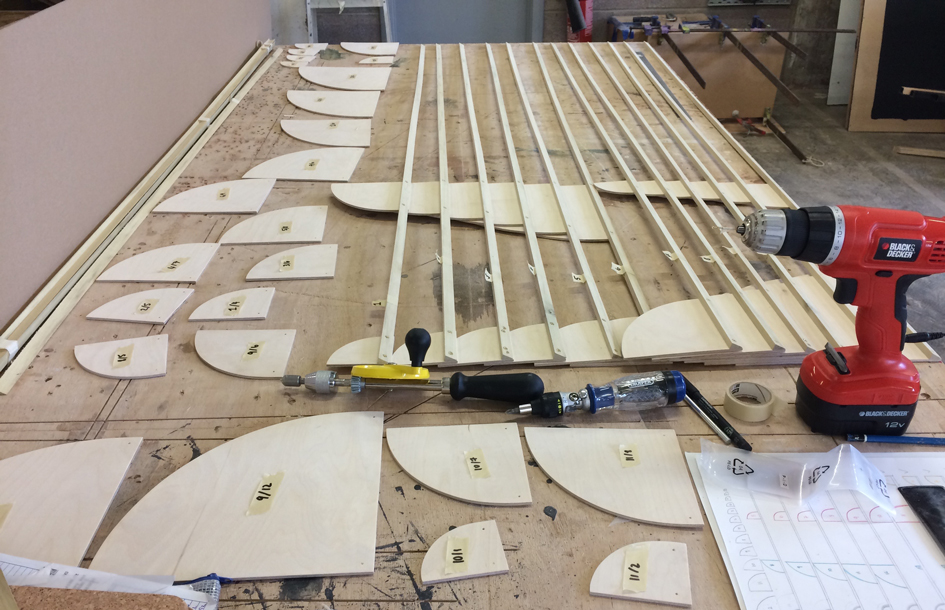
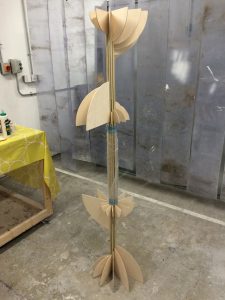
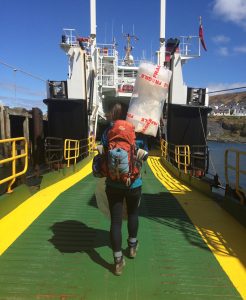
I returned to Eigg in mid-May with the sculpture, now titled Nautilus Turbine, and theatre-maker Alice Mary Cooper who was to animate the sculpture for documentation at Laig Weir. We were joined at the bothy by Lila Matsumoto, a poet with whom I have been working, and my partner Thomas Butler to assist with the logistics of getting the sculpture to the remote weir site. Islander Neil Robertson provided excellent off-road driving services to take us along the little-used path to the weir where we donned wetsuits to enter the still dark water.
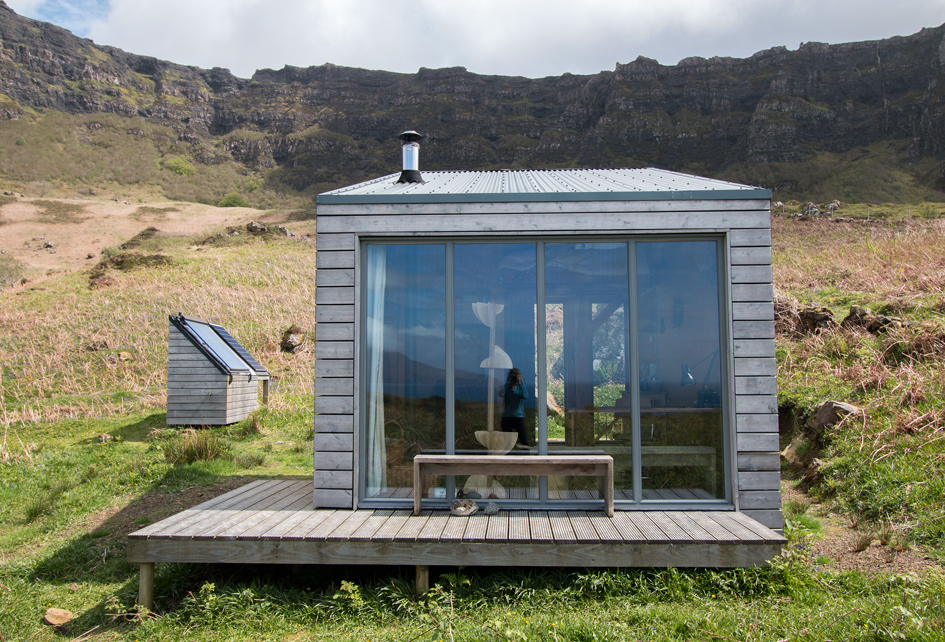
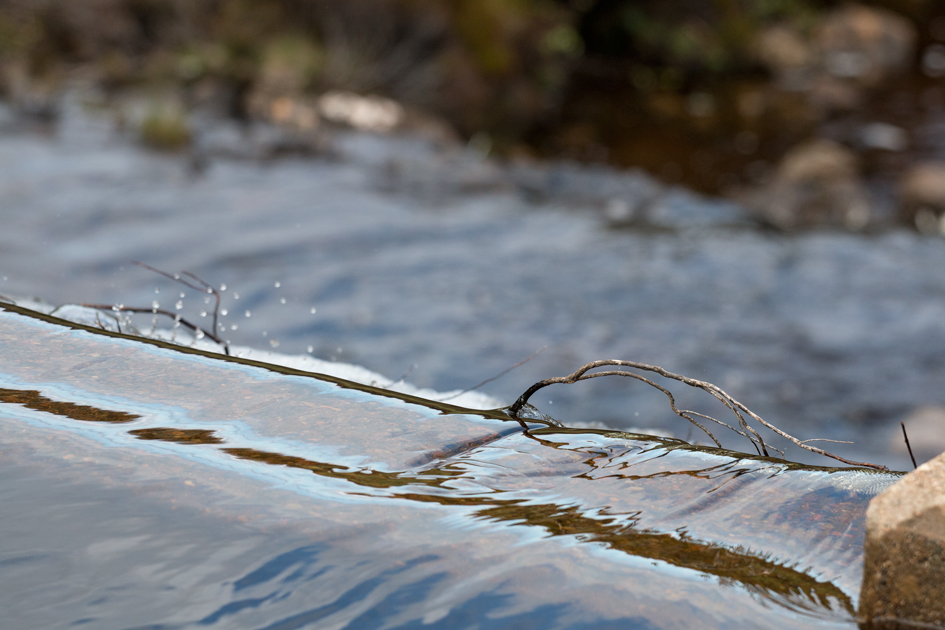
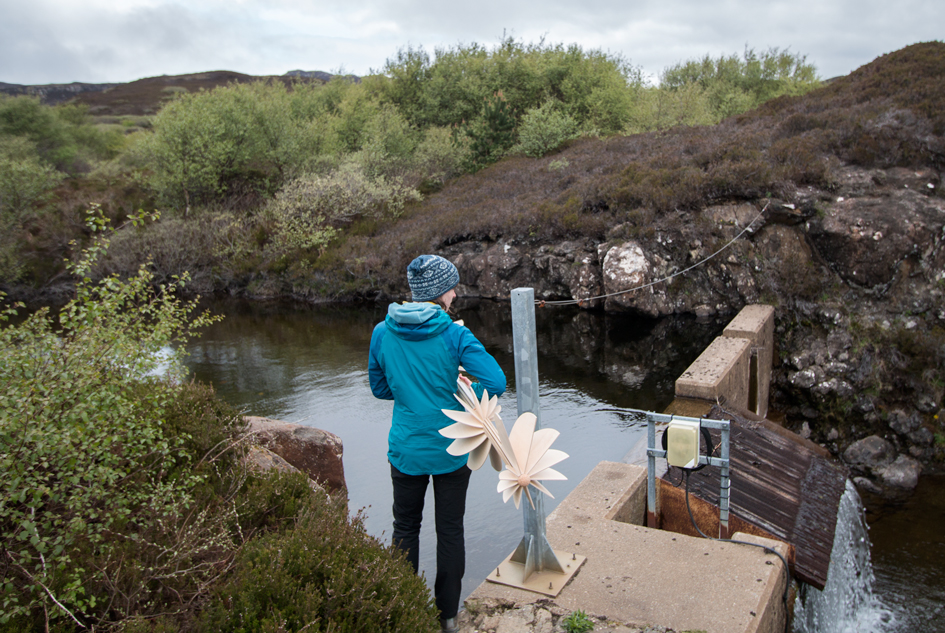
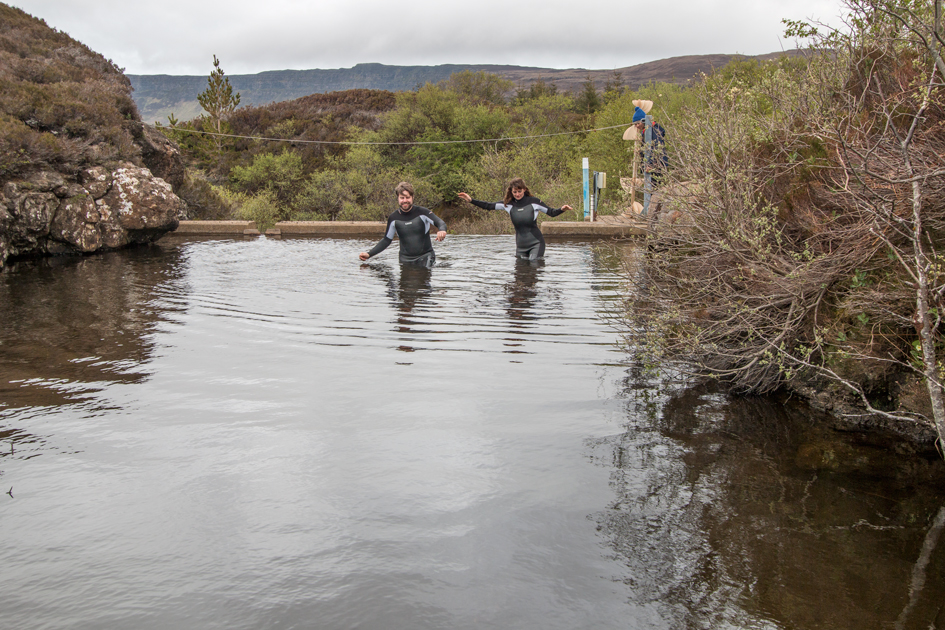
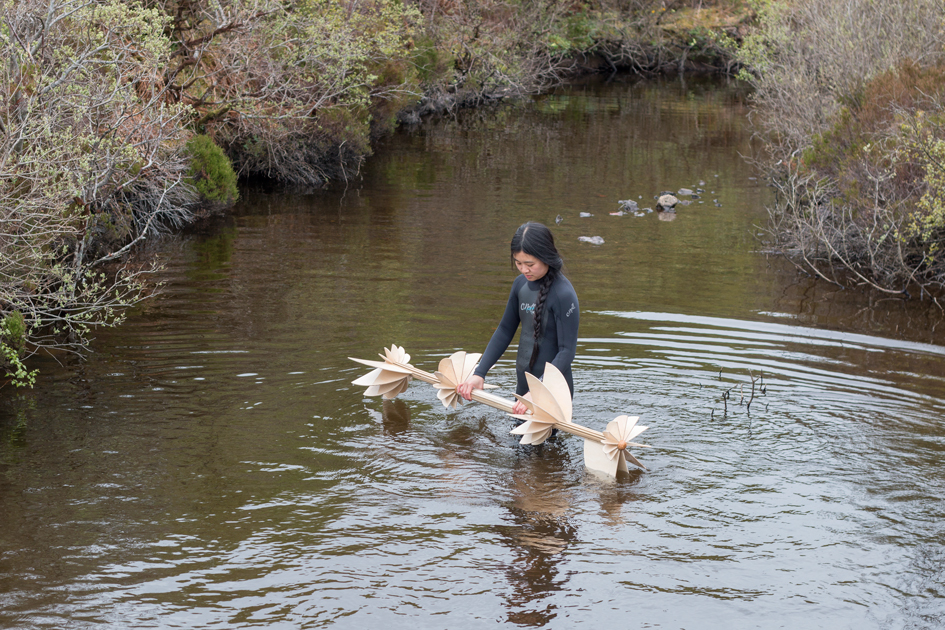
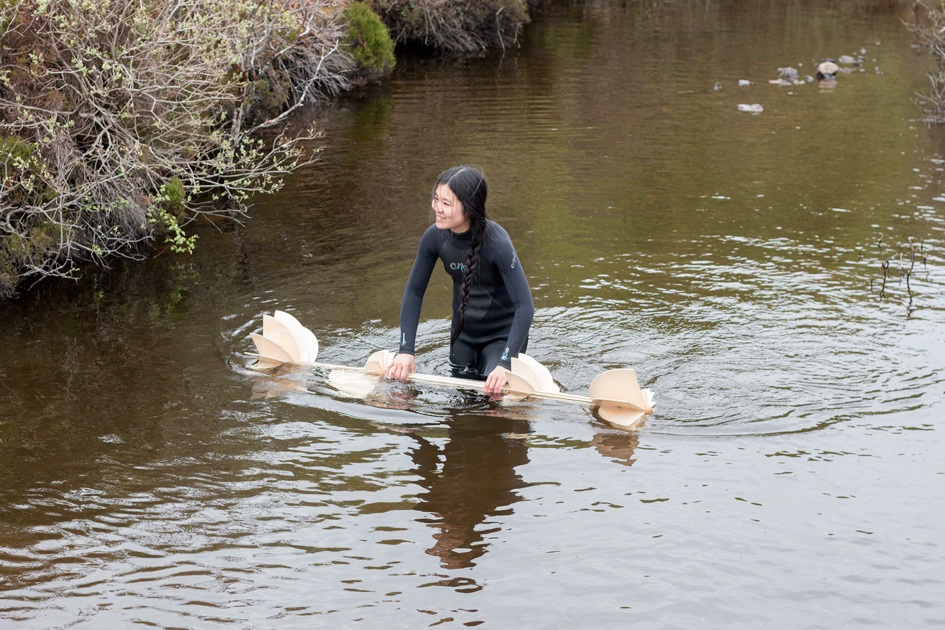
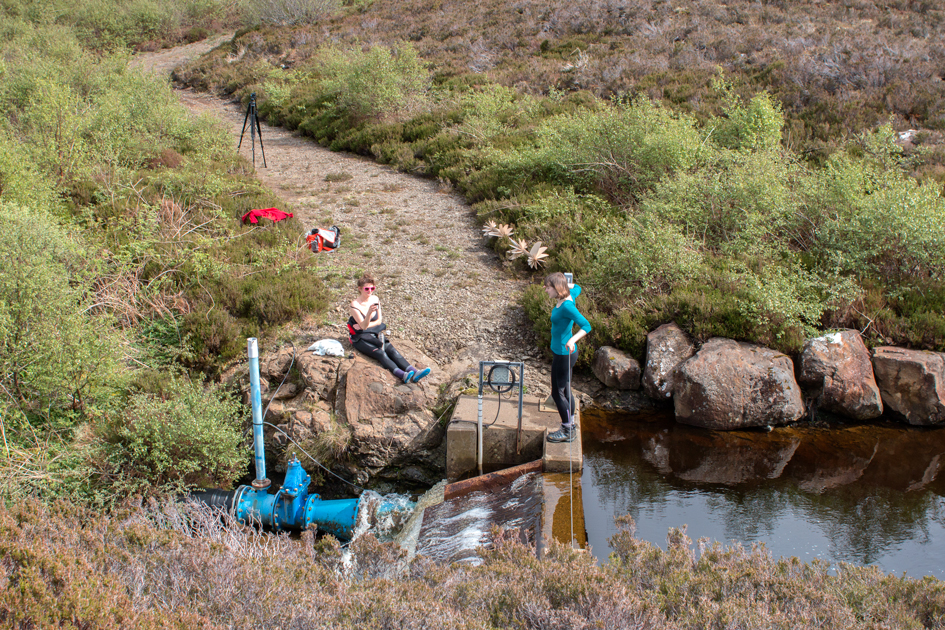
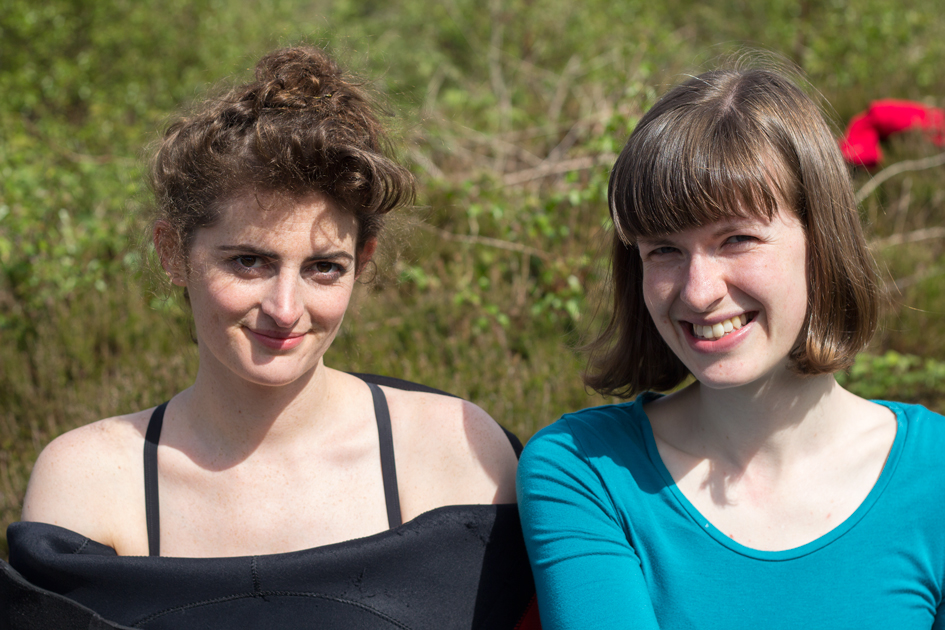
A photo blog of my time on Eigg can be viewed here: hannah-imlach-artist-residency.tumblr.com
And more information and images of the completed project can be found here: www.hannahimlach.com/Nautilus-Turbine
